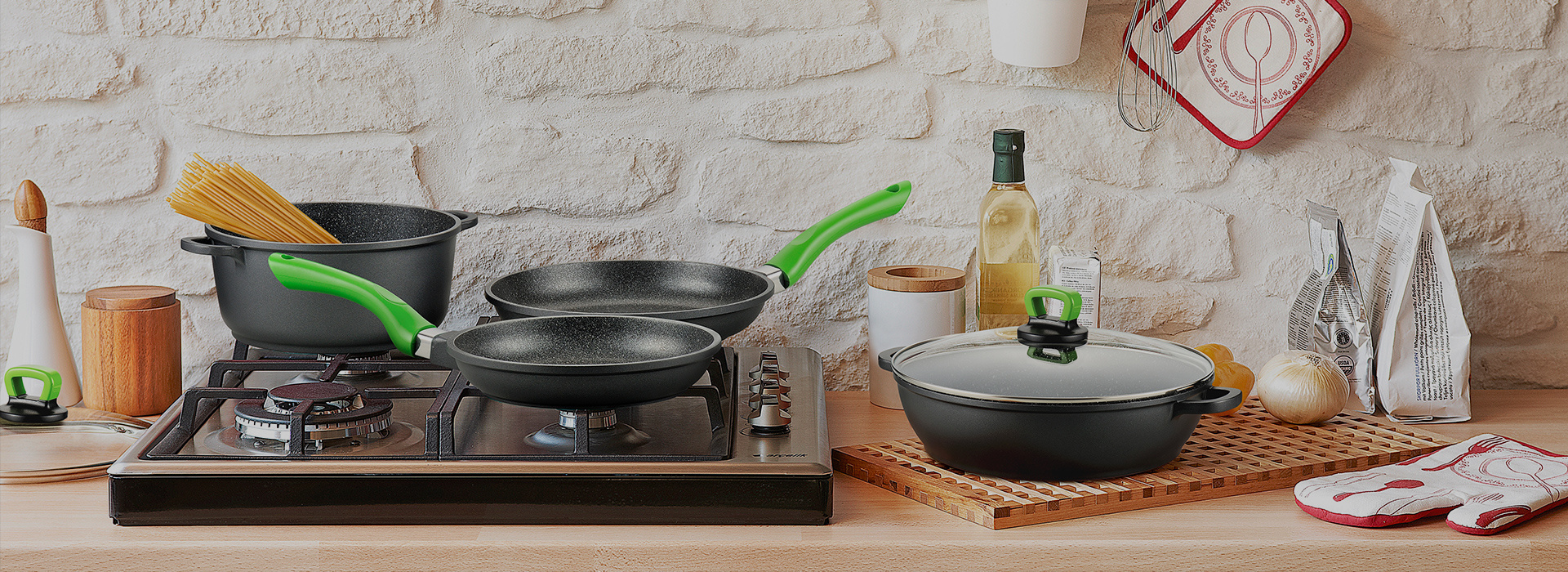26
2022-07
Kitchen Utensil Cleaning Tips to Keep Your Kitchen Clean
author:
The biggest headache for friends who cook often is that the kitchen cannot be cleaned no matter how clean it is. Greasy range hoods, stoves that cannot be cleaned, window screens full of oil fumes, etc., all make the kitchen dirty. Cooking in such a place, I believe everyone will not be in a good mood. Today, I'm going to teach you some tricks to make your little world clean.
1. Clean pots and utensils
There are many types of pots depending on the material. The pots we use every day generally include pans, stainless steel pots and iron pots. For the cleaning of pans, our most common method is to pour the detergent directly, wet the scouring pad with warm water, and then scrub directly. For the sticky substance attached to the bottom of the stainless steel pot, you can first pour the detergent and water together, heat it for about 10 minutes, and then clean it. The wok is simple and greasy. After we clean them with a damp cloth and cleaning solution, we need to coat them with a layer of vegetable oil to prevent them from being corroded. If there are dirty things on the outside of the pot, then we need to pour detergent and warm water into the pot, wait for 20 minutes to soak, and then clean the bottom with a relatively hard scouring pad.
2. Clean the microwave
Microwave ovens are our most-used appliances, and they get dirty easily. In the process of daily cleaning, be sure to unplug the power first, do not bring any points. Clean the exterior with a well wrung damp cloth or sponge. When cleaning the inside, you can put a glass of water first. After heating for a period of time, the inside of the box will be filled with water vapor. At this time, just wipe it with a scouring pad filled with detergent. The turntable and stand can also be wiped with a scouring pad. After wiping, be sure to dry the inside before use.
To clean the inner wall of the furnace, you can use a cotton ball or a small piece of scouring pad dipped in alcohol or white wine, because these two bactericidal effects are relatively strong. To remove the peculiar smell inside, you can add a drop or two of white vinegar to the cup and heat it to remove the peculiar smell.
3. Stove cleaning
During the usual cooking process, there will be a lot of greasy dirt on the gas stove. When cooking noodles, we can leave the soup and spread the hot soup on its surface. Then wait a while and clean with a scouring pad. Rinse with water again. Or while you're cooking dinner, while they're still warm, coat their surfaces with soapy water or club soda and wipe them down with a scouring pad. It is best to wipe when it is still warm. Otherwise, it will be difficult to wipe off oil stains, splashed porridge, etc. after it cools down.
4. Cabinet cleaning
When scrubbing the outside of the cabinet, wipe it with a soft scouring pad to avoid scratches. When wiping the interior, use a cleaner with a stronger germicidal effect and a harder scouring pad. After cleaning the cabinet, open the doors and windows, and wait for it to dry before moving the utensils in to prevent bacteria from multiplying and causing the utensils to become moldy.
5. Cleaning of swimming pool
This place is also the easiest place to get dirty, because not only vegetables but also other things have to be washed here, so it is easy to get dirty. We can buy a special cleaning pool, if not, you can put some salt on the dirty place, then use waste plastic wrap to clean up and down, and then rinse with warm water. For the four corners and the sewer, you can spare an old toothbrush and a little salt, and then wash it carefully, it will be very clean. The sewer cover can be soaked in soapy water for about 20 minutes, and it will be very clean.
6. Clean the range hood
The range hood is the place with the most oil pollution, and it is very laborious to clean. During the cleaning process, first pour out the grease in the fuel tank, and then soak it in a basin filled with soapy water or detergent. The oil screen can be removed and soaked directly. If there is a lot of oil, soak for 40 minutes. If there is a little oil stain, soak for 20 minutes.
Related News












